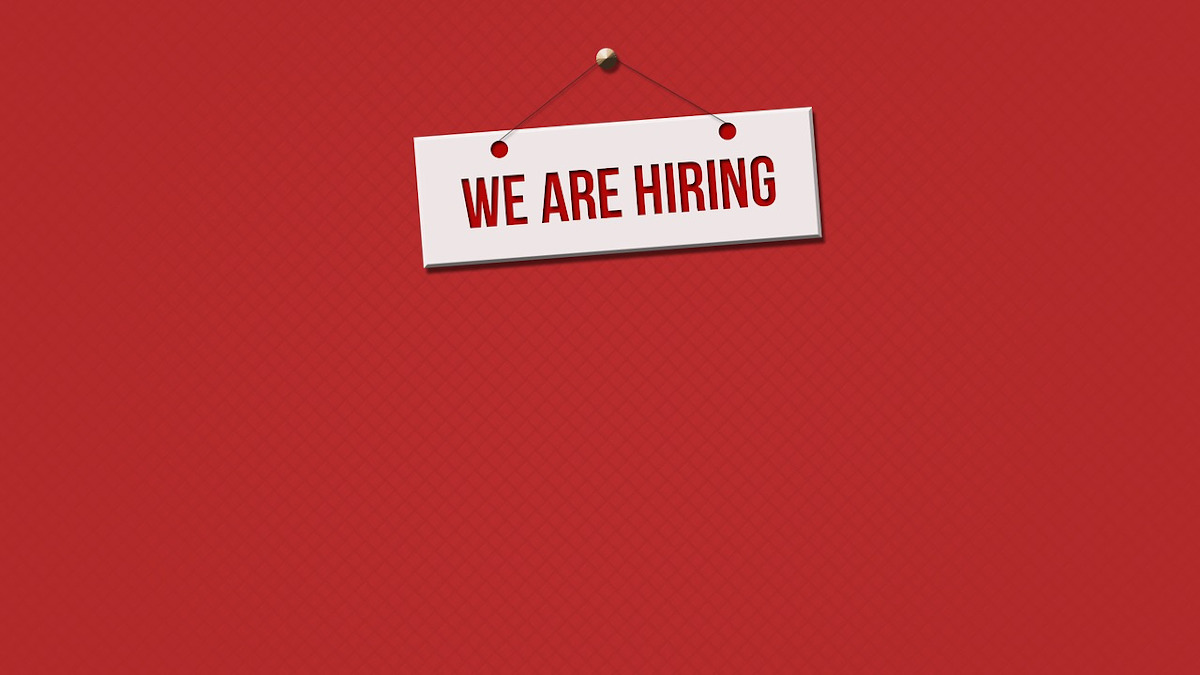The problem starts at the top of the funnel. Research has shown that people prefer the status quo in decision making. if you don’t have a diverse team, you are going to be biased to keep the status quo.
According to researchers, when you have a pool of four candidates and only one of them is a woman while three are men in a predominantly male organization or position, the woman has a statistically 0% chance of being hired. Basic math would say it is a 25% chance, but practice shows it is 0%. If there is only one minority candidate, they are too different from the rest of the group. Therefore, the need to retain the status quo kicks in. However, if you add another woman, so it is now two men and two women, the math starts working again, and now there is a 50% chance a woman gets hired.
By having a low diversity entering the recruitment process, you automatically create a bias in decision-makers. Just by adding more diverse candidates, you significantly reduce the status quo bias. The answer seems to be in affirmative action. You need to go out of your way to source more diverse candidates. A good start might be to rewrite your job advertisements.
Gendered language in advertisements
Words matter. Men are less likely to apply for female-labeled jobs, and women are less likely to apply for male-labeled jobs. And yet, many job ads use heavily gendered language. If you don’t think it is your case, then think about what gendered language means. It is wording that is stereotypically connected with a particular gender. Masculine ads in the male-dominated domain will use words like leader, competitive, dominant. In comparison, feminine ads in female-dominated domains may use terms like support, interpersonal, understanding. Experiments showed that from the wording of the advertisement, applicants deduce how male or female-dominated the profession is and used it to decide whether to apply or not. It wasn’t that they wouldn’t feel like having the competence. It was that they felt they wouldn’t belong.
Iris Bohnet shows an example of advertisements for elementary school teachers and how you can quickly expand your talent pool by a simple change in your ads’ wording. Consider this line, “we are looking for a committed teacher with exceptional pedagogical and interpersonal skills to work in a supportive, collaborative work environment.” This is a gendered language targeting women. By leaving out the second part, you can immediately include men who would otherwise feel they won’t belong and double your talent pool. Read this, “we are looking for an excellent teacher with exceptional pedagogical skills.” Much more inclusive.
Similarly, the way you structure your compensation schemes may influence whether you attract more men or women. Researchers showed that women tend to avoid competitive environments as they have, on average bigger risk aversion and, in general, just dislike competition. However, this flips when the compensation is based on team performance. Especially high-performing men don’t feel comfortable having their pay impacted by the performance of the whole team.
When researchers looked into which occupations women typically worked given a choice, they found out that they heavily drifted towards jobs where the performance could be objectively measured and that offered flexibility.
How to build inclusive recruitment process
- Experiment with your job ads – write inclusive job advertisements. Remove any language that is associated with a specific group of people or a particular gender. Even words like “competitive” can be associated with men. Not to mention they don’t really mean anything useful to help the candidate identify whether they would fit the job. Remove any requirements that are not key to the job and can limit the talent pool you are accessing.
- Don’t overinflate the requirements – be realistic about what you truly need so you don’t necessarily drop candidates who would be perfectly capable of doing the job. Consider the time, effort, and costs related to the candidate filling a particular technical gap on their CV. It often happens that hiring managers would refuse a great candidate only because he or she lacks knowledge of a specific technology, even if that technology can be learned within a couple of weeks. Not only have they wasted a good candidate, but they have wasted a candidate who would be motivated by learning something new and growing. The opportunity to learn is precisely the type of things you need to retain your people. It will be much more challenging to retain a candidate who is overqualified for the job, can do it without even trying, and won’t learn anything new on the job.
- Hire in batches – if possible, hire in groups so you can compare people to each other based on some objective measures. If you want variety and diversity, bundle up your decisions. As Iris Bohnet describes, when researchers asked participants to choose three snacks – apples, cookies, and bagels to be consumed on three different days, two-thirds chose three different snacks. When they were asked each day separately, only 9% choose different snacks. This type of variety is found often. Imagine you like blueberry yogurt. If you buy one yogurt to eat in the afternoon, you will most likely pick your favorite one. However, if you buy ten yogurts for the next couple of days, you will most likely choose a couple of other flavors. The same applies to picking up employees. You are more likely to hire a more diverse group of people if you hire in batches rather than one by one.
- Measure the interview process’s effectiveness – you need to find a way to measure the recruitment process’s quality by the actual on-the-job performance of the people you hired and keep experimenting. Over time, you will identify what questions correlate most closely with the required skills, traits, and desired performance.
- Consider removing the name and demographics information from the CVs – even the name of the candidate will trigger biased decision-making. Try to anonymize the resumes sent for review by the hiring managers. You may prevent bias from entering too early in the selection process.
- Consider doing the first interview over the phone – a good recruiter will want to talk to a candidate before sending them to the hiring manager. Do it over the phone and without video to minimize first impression bias.
- Consider the advantages and disadvantages of panel interviews carefully – panel interviews may sound like a great way to remove bias from the hiring decisions, but it rarely works. They put certain groups, like introverts, at a disadvantage. It is easy to be overwhelmed when there are multiple people shooting questions at you. When designing your interview process, keep this in mind. That means no surprises and no overwhelming force. Ideally, you let the candidate know before the interview who will be on the panel so they can mentally prepare. It might also be helpful to have one person leading the interview asking most of the questions, as the others mostly observe. Or split the interview into several parts with different people taking the lead so the candidate can focus only on one person and doesn’t need to be always alert for the others.
- Mitigate groupthink – groupthink is the biggest problem when doing panel interviews. The interviewers will unconsciously see how others react, what they ask, and adjust their behavior and judgment accordingly. Group interviews may sound like a way to remove bias, but they often do the opposite in reality. They strengthen it. You can mitigate this type of groupthink by letting interviewers interview independently and make up their minds before comparing notes.
- Have a diverse group of interviewers – if you want to interview as a team, then do as a diverse team. By having more diversity present in the interview process, you invite different perspectives and biases that may cancel each other. Of course, it requires everyone on the interview panel to feel secure and confident that their voice will be heard and that they can say what they mean.
- Teach the candidates how to answer interview questions – find ways to level the playing field. Some candidates are better at interviews than others. However, only because someone aces the interview doesn’t mean they will be better at the job. They appear more competent only because they have more practice interviewing or are better at selling. Provide all candidates with a framework for answering the questions, like the STAR model. STAR stands for Situation, Task, Action, Result. It is a method of answering behavioral questions in an easy to follow way. Educating the candidates on the technique allows them to be at their best even if they are not practiced at interviewing.
- Do regular interview training and interview audits – to make sure there is a consistent approach to interviewing, make sure that you have someone who can regularly attend interviews lead by different people to point out differences and help the organization be aligned on who gets hired and how.
Run inclusive interviews
Unstructured interviews don’t work. Unstructured interviews so popular with many managers are the worst kind of interviews for predicting employee performance. Not to mention, they are prone to bias and work against diversity in the organization. Yet, many human resources managers believe that unstructured interviews by experienced managers will be a better predictor of the right employee than aptitude or personality tests. When these different types of interviews get compared to job performance, the unstructured interviews fare the worst. Simply put, we prefer to rely on our expertise and experience rather than on the statistical evidence. And it doesn’t work. If you want to improve your chance to hire the right employee for the job, focus more on structured interviews combined with general cognitive ability tests.
Unstructured interviews allow for biases to bubble up. The chances are that when you like someone because they are like you, your questions will be tailored to support your first impression of them and vice versa. If someone is different from you, your questions will be subconsciously tailored to show that they are not a good fit. The key is to ask the same set of questions to every candidate and have a system to rate their answers as objectively as humanely possible.
So what to do instead of unstructured interviews?
- Define how success in the role looks like and not the list of skills the person needs. People may have different ways how to reach the goal.
- Decide what you are looking for in a candidate and draft a list of questions that will best determine whether the candidate fits these criteria.
- Ask all the candidates the same set of questions in the same other, though still make it feel more like a conversation and not an interrogation.
- Have a scoring system for each question so you can’t easily dismiss those who do well but are different from you.
- Before you meet the person, assume the best. They have the skills, they deserve your respect, they are your equal, and together you are trying to solve a business problem.
- Consider instructing candidates to wait a bit, 10-30 seconds, before they start answering the question. This may remove bias against introverts who may need to process information internally before they speak out loud. Otherwise, extroverts get the advantage as they will appear to be smarter by merely being comfortable with thinking out loud.
- Account for likability as it is often one of the key elements when making a hiring decision. And yet, it is one that is the most prone to bias. We tend to like people who are like us. Especially in the short time you have on the interview, you can’t get to know the other person, so likability is dangerous. The best is to rate the likability and then compare with others to see how much the first impression effect influences you.
- Don’t let other interviewers share their thoughts on the candidate with you until you had an opportunity to do your interview. By sharing thoughts, we automatically create a bias in others to our way of thinking about the candidate. However, if you need the other interviewers to dig into some aspect you didn’t have time to focus on yourself, just point it out in a neutral manner so they can focus on it but come to their own conclusion.
- Write down your notes from the interview and your recommendation before you debrief with others. That way, you won’t get influenced, and your initial thoughts will be voiced.
- Do a formal debriefing of all interviewers using the same set of criteria.
- Compare the candidates against each other based on the numbers. Be aware that this is still a subjective selection process as you are subjectively assigning values to the answers. Still, it is less subjective than succumbing to your biases unchecked.
- When comparing notes, let the more junior team members share their thoughts first, so they don’t subconsciously align with the most senior person. Ideally, you want to share written notes or some scorecard first before everyone talks about it.
- Play Devil’s advocate. When you like someone, come up with reasons why not to hire them and vice versa. When you don’t like someone ask probing questions about why they might be a great addition to the team.
- Use a flip test. If you see a particular behavior from a candidate from an underrepresented community, imagine that the same behavior would come from someone from a majority, like a white man. Would you react the same way? Would you describe the behavior using the same words? If not, you are biased, and you need to recalibrate.
Putting it all together
The processes we use and the organizational design decisions we make have a significant impact on how diverse our teams are. Small design changes in company processes can have an immediate positive impact on the type of people the organization hires and retains and ultimately on the bottom line. To build more diversity into the organization, consider expanding the candidate pool to unusual sources and work hard to mitigate unconscious biases from the selection process. Design the recruitment process in a way that highlights these biases and mitigates them. You will increase the chance of underrepresented groups being hired. You will create a more equitable hiring practice, give everyone a fair chance, and ultimately build a more diverse organization.
What is your take on the topic? Do you believe increasing diversity in companies is important? What is the biggest obstacle to having more diverse teams? How do you improve recruitment practices to hire more diverse workforce?
Photo: VISHNU_KV / Pixabay.com
Follow me on Twitter: @GeekyLeader






Leave a Reply